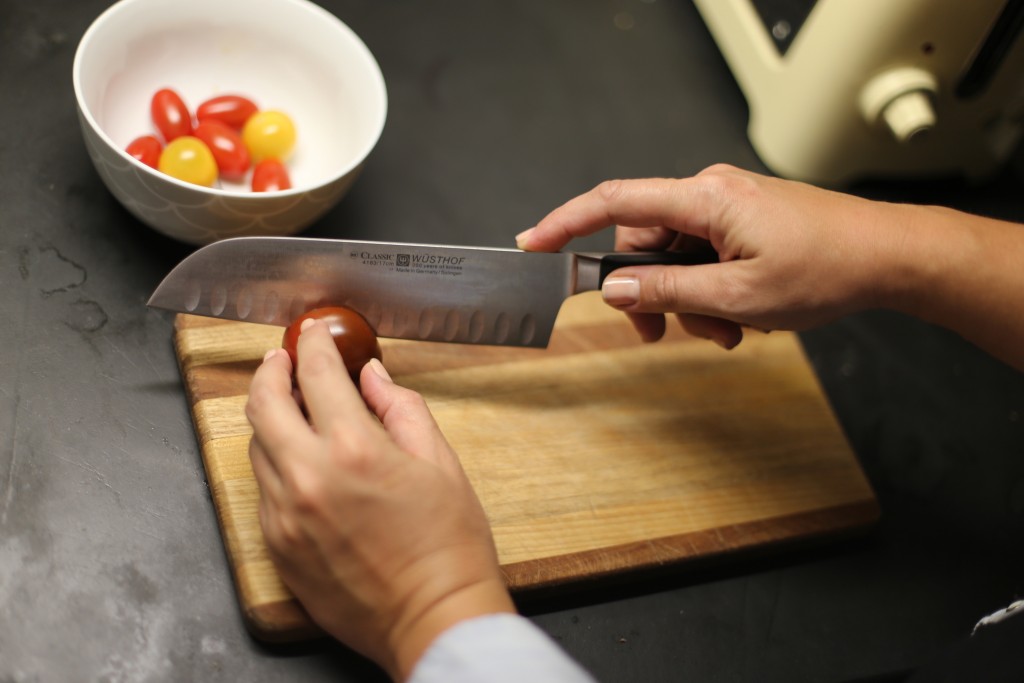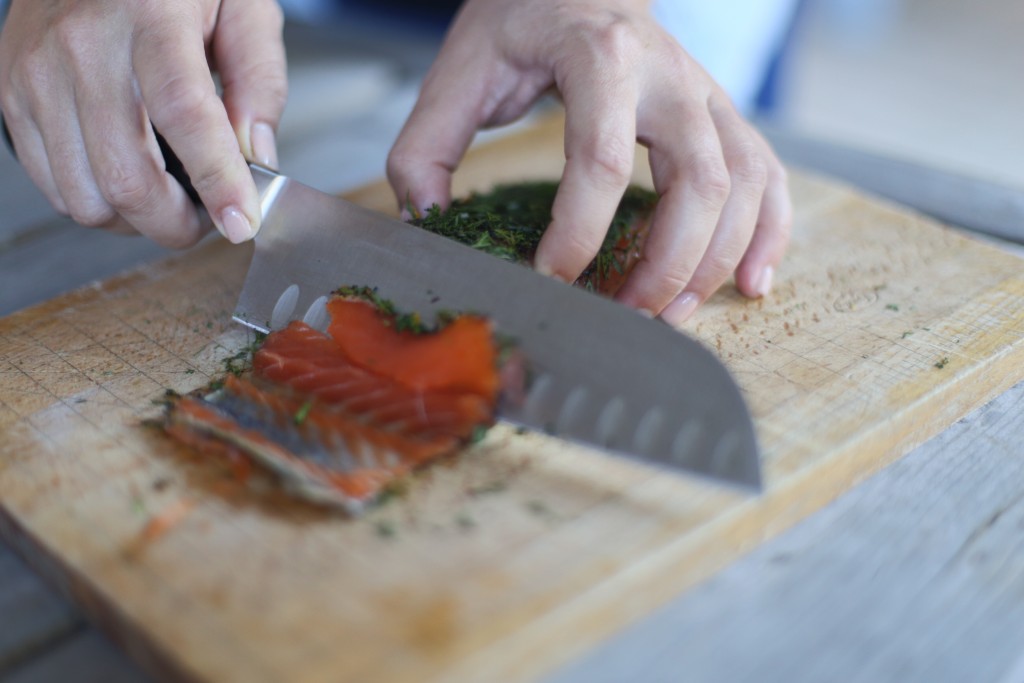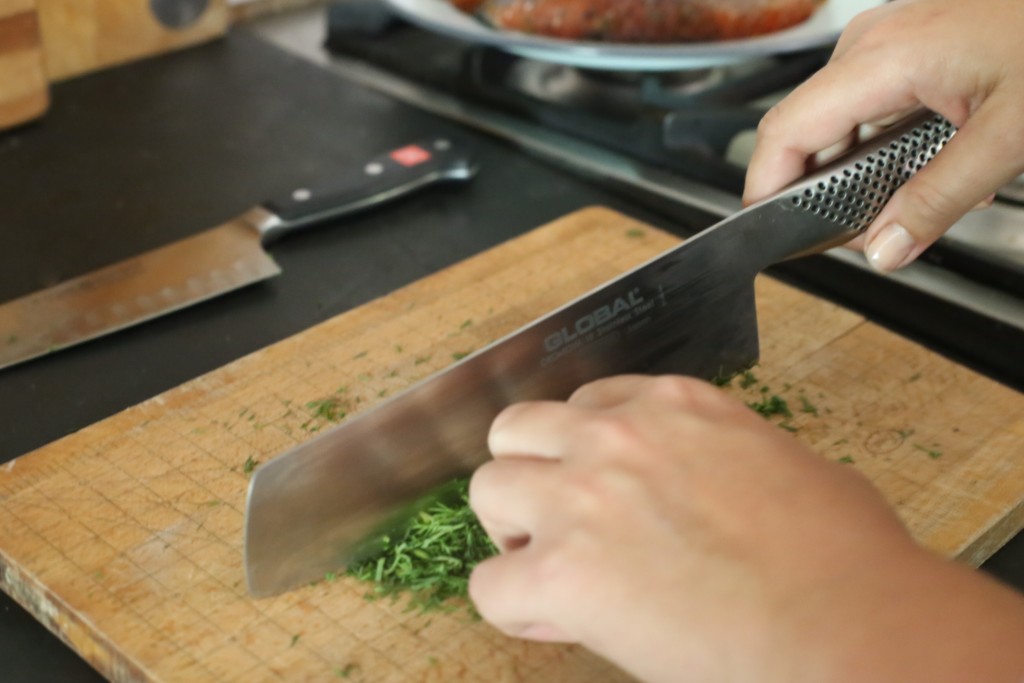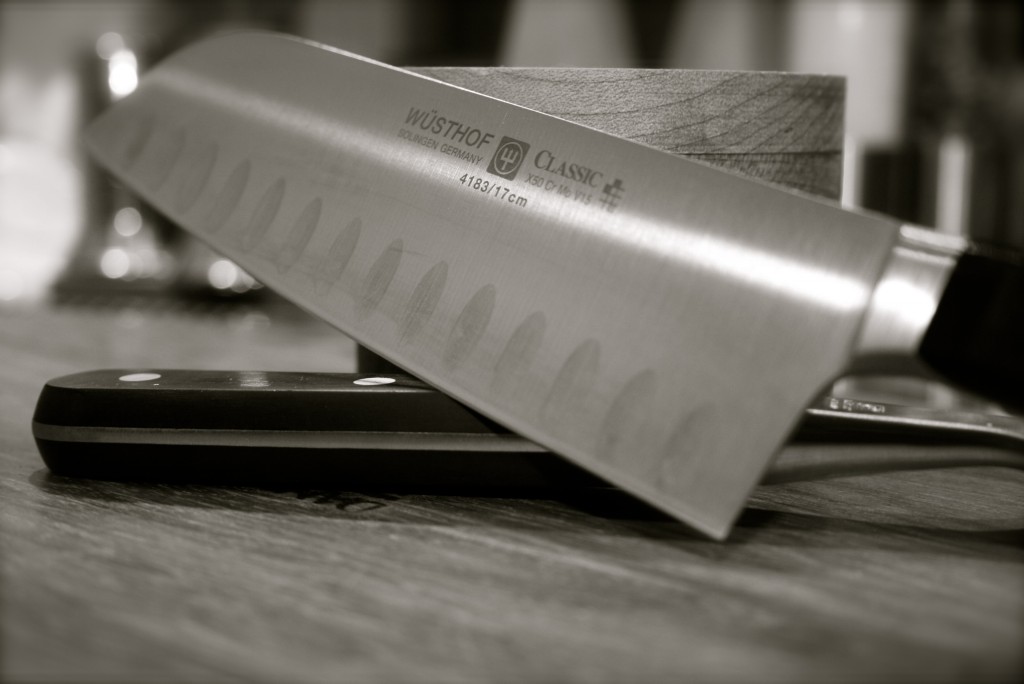Wusthof vs Global
I received the
Wusthof Classic Santoku knife to test out and compare against the Global knives which I’m used to using.
I’ve used
Global knives since choosing them for our wedding registry 5 years ago. I’ve used them in my daily cooking since and have become so accustomed to them that I was curious to try the Wusthof Santoku knife – how different could they be?
I am slightly embarrassed to admit that we have yet to have our Global knives sharpened, but they still cut very well and I suppose this goes to show that an investment in premium kitchenware makes sense. Seeing that Wusthof offer a
free lifetime sharpening service, I was interested to see how this German brand compared to my Japanese go-to.
German knives are typically heavier than their Japanese counterparts, but this is not the case with the Santoku which Wusthof manufactured with a Japanese-style blade.
The Wusthof Santoku is lighter than my Global chef’s knife and has a thinner blade, which would lead me to suspect it would have a much sharper edge and slices more precisely. It looks and feels extremely powerful.
I quickly noticed how sharp the blade is, putting it to the test by making a tomato salad. On cutting a tomato, I barely needed to press down for it to slice through. I could also cut extremely thin slices easily, with the Granton edge helping to separate each slice, preventing it from sticking to the blade.
It was so impressive and quickly convinced me why these are such popular knives among chefs and cooks in the hospitality industry.

The key is Wusthof’s performance lies within their manufacturing process. Each individual knife in their
Classic range undergoes 38 manufacturing steps, one of the most significant of which is their hardening process where they hot-drop forge a single blank of high carbon steel before tempering and finally hand grinding it to superior sharpness.
Having said that, carbon steel requires sharpening more frequently to retain its edge.
A Santoku knife is a great knife to have in the kitchen. Its versatile design means it can easily handle chopping, slicing, mincing and dicing. The hollowed places you can see on the knife’s edge are there to increase performance by preventing food from sticking to the side.
It’s easy to see why this style of knife has become very popular for both domestic and professional use.

My Verdict
If I’m very honest, I was a little anxious at first using the Wusthof Classic Santoku, partly because of how different it felt from the familiar grip of my Global knives that I am accustomed to and also because of their reputation for making incredibly sharp knives. I think it just takes some getting used to, like driving a new car or changing a tennis racket.
Once I got comfortable using it, I loved the performance of the Wusthof knife and understand how it is a cut above (excuse the pun) Global and priced as such. I will use this knife for anything that requires delicate precision like finely chopping vegetables for salads and stir-fries or anything that may be more difficult to cut. I’ll continue to use Global knives for heavy-duty and fast work, such as the rocking back and forth motion while chopping herbs.
Deciding between Global or Wusthof for your choice of knives, I would say that Wusthof knives would be the choice for professionals or enthusiasts who enjoy heavier, sturdy knives and will pay extra for superior sharpness.
Global knives, I feel are a bit more all-rounder offering great performance at a more affordable price point, are lighter and would require less maintenance.

My take is that the Wusthof Classic Santoku is a German-made knife in a Japanese style – bringing the best of both worlds into this amazingly crafted chefs tool. A great addition to your kitchen tool set.
To view Wusthof Knives click here
To view Global Knives click here

 The key is Wusthof’s performance lies within their manufacturing process. Each individual knife in their Classic range undergoes 38 manufacturing steps, one of the most significant of which is their hardening process where they hot-drop forge a single blank of high carbon steel before tempering and finally hand grinding it to superior sharpness.
Having said that, carbon steel requires sharpening more frequently to retain its edge.
A Santoku knife is a great knife to have in the kitchen. Its versatile design means it can easily handle chopping, slicing, mincing and dicing. The hollowed places you can see on the knife’s edge are there to increase performance by preventing food from sticking to the side.
It’s easy to see why this style of knife has become very popular for both domestic and professional use.
The key is Wusthof’s performance lies within their manufacturing process. Each individual knife in their Classic range undergoes 38 manufacturing steps, one of the most significant of which is their hardening process where they hot-drop forge a single blank of high carbon steel before tempering and finally hand grinding it to superior sharpness.
Having said that, carbon steel requires sharpening more frequently to retain its edge.
A Santoku knife is a great knife to have in the kitchen. Its versatile design means it can easily handle chopping, slicing, mincing and dicing. The hollowed places you can see on the knife’s edge are there to increase performance by preventing food from sticking to the side.
It’s easy to see why this style of knife has become very popular for both domestic and professional use.

 My take is that the Wusthof Classic Santoku is a German-made knife in a Japanese style – bringing the best of both worlds into this amazingly crafted chefs tool. A great addition to your kitchen tool set.
To view Wusthof Knives click here
To view Global Knives click here
My take is that the Wusthof Classic Santoku is a German-made knife in a Japanese style – bringing the best of both worlds into this amazingly crafted chefs tool. A great addition to your kitchen tool set.
To view Wusthof Knives click here
To view Global Knives click here

